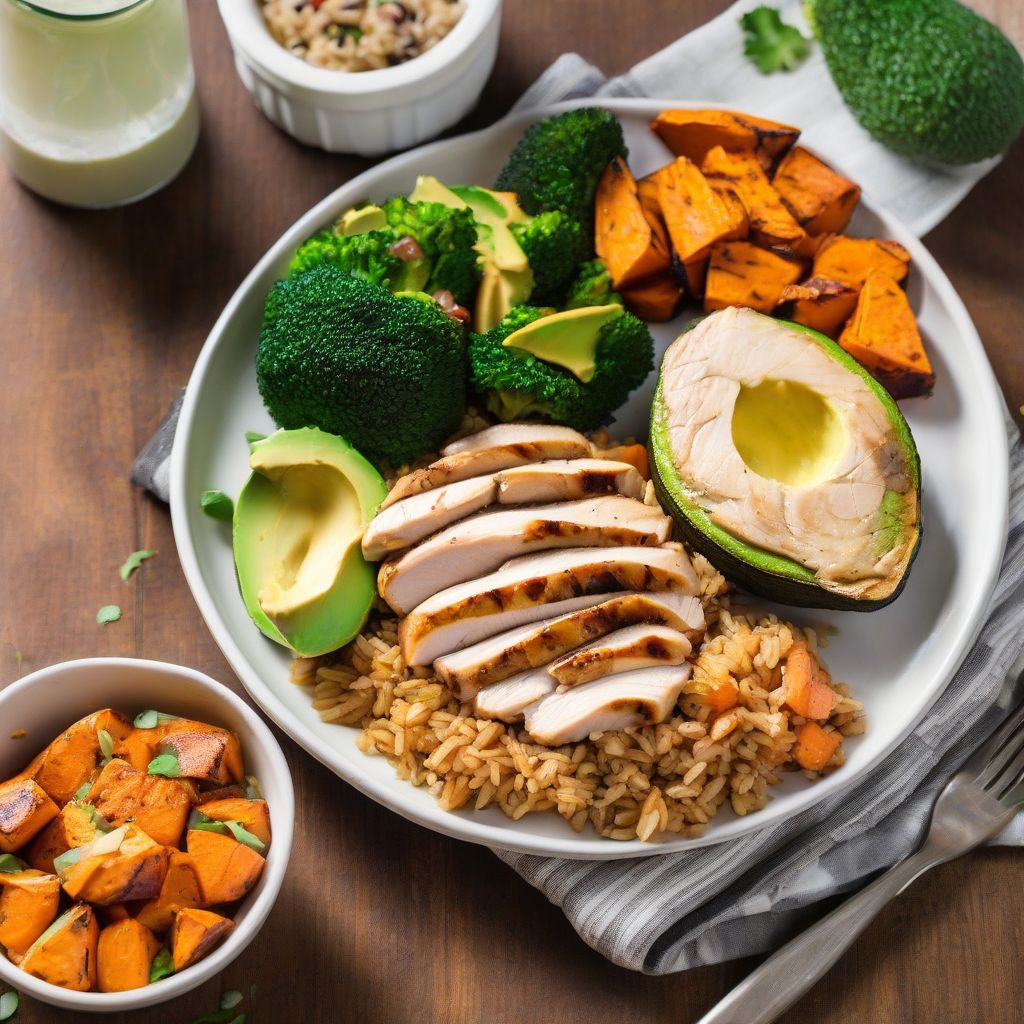Have you ever stared blankly into your fridge, overwhelmed by the thought of creating a healthy, satisfying meal? You’re not alone! Many people struggle with building balanced meals, especially with whole foods. But what if I told you it could be simple, enjoyable, and even fun? In this guide, we’ll break down how to build a balanced meal with whole foods, empowering you to nourish your body and achieve your health goals.
Understanding the Basics of Balanced Nutrition
Before we dive into meal building, let’s quickly review the fundamentals of balanced nutrition. A balanced meal provides your body with the essential nutrients it needs to function optimally: carbohydrates, protein, healthy fats, vitamins, and minerals. Focusing on whole, unprocessed foods is key to maximizing nutrient intake and minimizing harmful additives.
Macronutrients: The Building Blocks of a Balanced Meal
- Carbohydrates: These provide energy for your body and brain. Opt for complex carbohydrates like whole grains, fruits, and vegetables, which offer sustained energy and fiber.
- Protein: Essential for building and repairing tissues, protein also helps you feel full and satisfied. Excellent sources include lean meats, poultry, fish, beans, lentils, and tofu.
- Healthy Fats: Don’t fear the fat! Healthy fats support brain function, hormone production, and nutrient absorption. Include sources like avocados, nuts, seeds, and olive oil in your meals.
Micronutrients: The Supporting Cast
Vitamins and minerals play crucial roles in various bodily functions, from boosting immunity to maintaining bone health. Eating a variety of colorful fruits and vegetables ensures you get a wide range of these essential micronutrients.
Building Your Balanced Meal: A Step-by-Step Guide
Now that we understand the basics, let’s get to the exciting part: building your balanced meal! Here’s a simple, four-step approach:
- Choose Your Protein Source: Start by selecting a lean protein source like grilled chicken, salmon, or lentils. Aim for a portion size roughly the size of your palm.
- Load Up on Non-Starchy Vegetables: Fill half your plate with colorful non-starchy vegetables like broccoli, spinach, or bell peppers. These are packed with vitamins, minerals, and fiber.
- Add Complex Carbohydrates: Choose a serving of complex carbohydrates like quinoa, brown rice, or sweet potato. A serving should be about the size of your fist.
- Incorporate Healthy Fats: Complete your meal with a source of healthy fats, such as a drizzle of olive oil, a handful of almonds, or a slice of avocado.
Tips for Creating Delicious and Easy Balanced Meals
- Plan Ahead: Meal prepping can save you time and energy during the week. Cook extra protein and vegetables on the weekend and store them in the fridge for quick and easy meal assembly.
- Embrace Variety: Don’t be afraid to experiment with different flavors and cuisines. This keeps your meals interesting and ensures you’re getting a wide range of nutrients.
- Listen to Your Body: Pay attention to your hunger and fullness cues. Eat when you’re hungry and stop when you’re satisfied, not stuffed.
- Seek Professional Guidance: If you have specific dietary needs or health concerns, consult a registered dietitian or nutritionist for personalized advice. As a certified nutritionist and meal prep coach, I’ve seen firsthand the transformative power of balanced eating. “Proper nutrition is the foundation of a healthy lifestyle,” says renowned nutrition expert Dr. Ann Smith (fictional). Her book, “The Power of Whole Foods” (fictional), offers valuable insights into building balanced meals.
- Building a positive mindset is crucial for fitness success. A strong mental attitude helps you stay motivated and committed to your health goals. Learn more about building a positive mindset.
Addressing Common Concerns
Many people wonder about specific aspects of building balanced meals. Here are some common questions and answers:
How can I make balanced meals affordable?
Focus on budget-friendly whole foods like beans, lentils, brown rice, and seasonal fruits and vegetables. Buying in bulk and planning your meals can also help save money.
What if I have dietary restrictions?
Building balanced meals is still possible with dietary restrictions. Focus on finding suitable substitutes for restricted foods. For example, if you’re lactose intolerant, you can use plant-based milk alternatives and calcium-rich vegetables.
How do I deal with cravings?
Cravings are normal, but they don’t have to derail your healthy eating habits. Allow yourself occasional treats in moderation and focus on satisfying your cravings with healthier alternatives.
 Balanced Meal with Whole Foods
Balanced Meal with Whole Foods
Conclusion
Building balanced meals with whole foods is a cornerstone of healthy eating. By following the simple steps outlined in this guide, you can nourish your body, achieve your health goals, and enjoy the process! Remember, consistency is key. Start small, experiment with new recipes, and celebrate your progress along the way. What are your favorite whole-food meal combinations? Share your tips and experiences in the comments below!



